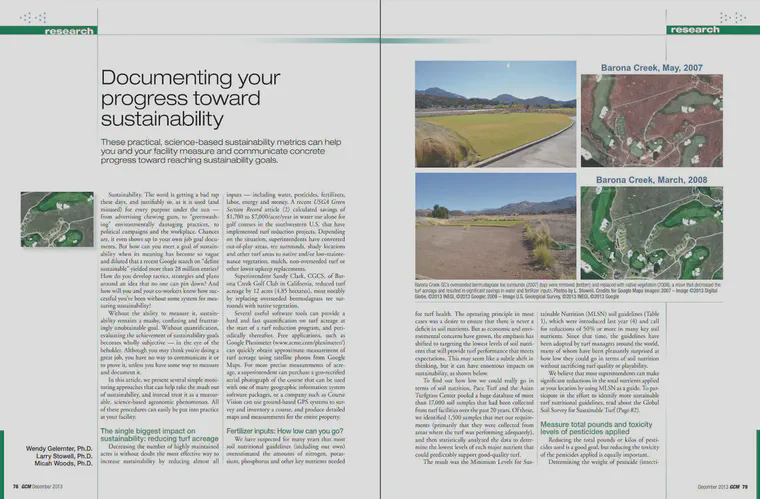Documenting your progress toward sustainability
In 2013, I was a co-author on this article with Drs. Wendy Gelernter and Larry Stowell. I encourage you to read the article now, if it’s your first time to come across it, or to read it again if you haven’t perused it recently. It’s an easy read—only 4 pages.

I just read it again, for the first time in a few years, and I’m struck by how relevant and useful the advice is today. Here are some notes.
- “How can you meet a goal of sustainability,” the article asks, “when its meaning has become so vague and diluted that a recent Google search on ‘define sustainable’ yielded more than 28 million entries?” I just ran the same search and Google returned 1 billion, 640 million hits (1,640,000,000)!
The article, of course, provides advice on how to cut through the hype and greenwashing and vague definitions, moving away from a “mushy, confusing, and frustratingly unobtainable goal.” The article suggests what to measure: “In this article, we present several simple monitoring approaches that can help take the mush out of sustainability, and instead treat it as a measurable, science-based agronomic phenomenon.”
We explain that “decreasing the number of highly maintained acres is without doubt the most effective way to increase sustainability by reducing almost all inputs—including water, pesticides, fertilizers, labor, energy, and money.” One thing to keep track of, then, is the area of highly maintained turf at a property.
We recommended keeping track of annual fertilizer inputs, the mass and toxicity levels of applied pesticides, water volumes, fuel cost and volume, labor hours, and electricity use and costs. I’d add sand amounts to this list too.
We recommended “comparing totals from one year to the next,” as a way for you and your co-workers to “communicate and prove” by measuring and documents what you are doing.